One of the most typical conversations among pilgrims to Santiago is about the toughness of certain stages. The high number of kilometers, the lack of services and shade in some of them, or adverse climates are some of the most discussed topics. But, undoubtedly, the toughest hills of the Camino de Santiago are the queens of conversations among the pilgrim community.
What is the toughest stage of the Camino de Santiago? Which stages require the most physical preparation? What are the toughest ascents? Which sections are the most challenging? We will answer all these questions in this article, based on our experience and that of our pilgrims.
What is the toughest stage of the Camino de Santiago? The top 10 most talked about
In all the routes and stages of the Camino de Santiago, there is a lot of beauty, nature, and heritage. However, all this is among dozens of kilometers, with some stages and sections easier to traverse and others more complicated. The latter are characterized, above all, by having great unevenness and sometimes accumulating many kilometers of ascent.
Nevertheless, with proper physical and mental preparation, these challenges can be overcome, in addition to having the best advice. Therefore, we want to inform you about the 10 most talked-about sections and ascents for their physical demand among all the Jacobean routes. Some of them, for many, are part of the toughest stage of the Camino de Santiago.
Saint-Jean-Pied-de-Port – Collado Lepoeder
We start with the French Way at the border of France and Spain, with one of the most discussed ascents among the pilgrims. The stage between Saint-Jean-Pied-de-Port and Roncesvalles has a turning point, the legendary Collado Lepoeder. In a distance of about 20 km, it goes from 150 m to about 1450 m, one of the famous tough hills for those who do the entire Camino from here.
This official section, known as the “Napoleon Route“, is a tough but beautiful stretch that has a variant through Valcarlos, shorter and less hard. Any pilgrim doing this stage should take this variant if pilgrimaging between November and March, due to extreme snow weather conditions. You have been warned, and there is also a fine.
Cizur Menor – Alto del Perdón
We continue on the French route, and in the fourth stage, we find another of the most talked-about ascents among the pilgrim community: the climb to Alto del Perdón. Between Cizur Menor and this legendary point, with its famous Jacobean sculptural ensemble, there are about 8.5 km in which you ascend about 300 m.
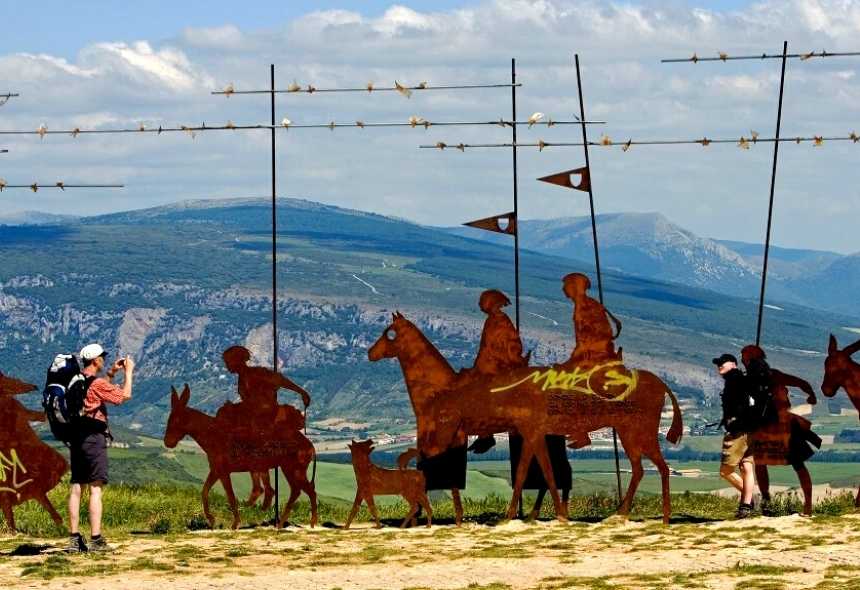
Pilgrims resting and taking photos after climbing Alto del Perdón.
Hospital – O Cebreiro
Entering Galicia on this French route, perhaps the most mythical place of this journey is reached: O Cebreiro mountain. This point would be the end of the 27th stage of the French Way from its start in Spain: for some, the most demanding stage and one of the toughest hills of the Camino. In fact, it is considered the Queen Stage, as it is the highest ascent of the French route.
After covering 27.8 km, a considerable distance, a final ascent section must be faced: about 600 m in 8 km, almost nothing! However, the sublime landscapes, the entrance to Galicia, and its “hyper-photographed” monument make the ascent worthwhile. Moreover, the final arrival at the bucolic and mythical village of O Cebreiro will be the best reward, with its church of Santa María la Real and its historic pallozas.
Boente – Arzúa, the famous “leg-breaker”
And to finish with the French Way, we cannot forget the well-known “leg-breaker“, that is, the final stretch between Melide and Arzúa. Starting from the church of Santiago de Boente, pilgrims face a combination of three pairs of descents and tough hills. Like a roller coaster, in this section of the last 100 km of the French Way, attention must be paid to legs, ankles, and knees. The slopes are not very steep, but they are the final 8 km that those starting from Palas de Rei will need a massage in Arzúa.
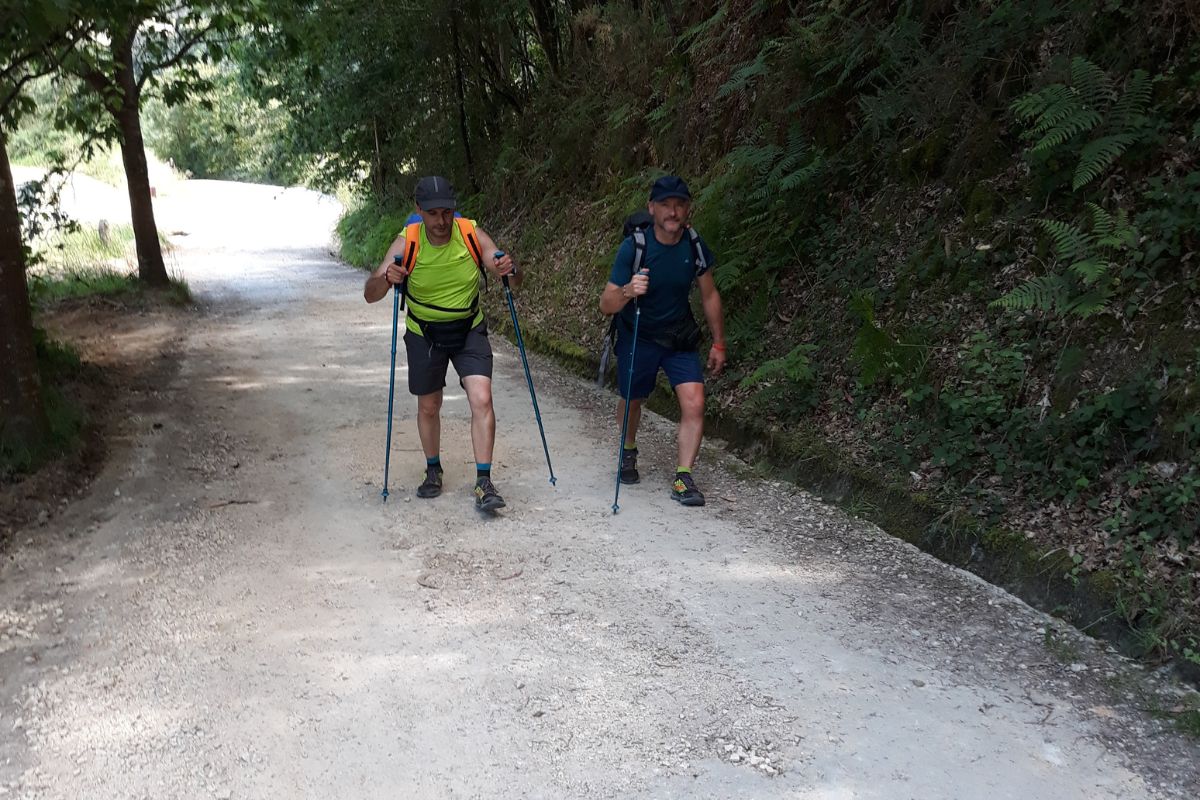
Pilgrims climbing the “leg-breaker” of Arzúa on the French Way, one of the tough hills of the Jacobean route.
Codesal – Alto da Portela Grande de Labruja
While the Portuguese Way is quite flat and accessible for any pilgrim, it is not without some ascent. In Portugal, in stage number 20 between Ponte de Lima and Rubiães, walkers face Alto de A Portela Grande in Labruja, one of the toughest hills of the Camino. Over 4.2 km of distance, you ascend about 300 m through forests and beautiful landscapes in a short but challenging stage.
Combarro – Armenteira
Continuing on the Portuguese Way, but taking the Spiritual Variant in its first stage between Pontevedra and Armenteira, pilgrims have another tough hill. The Way reaches Combarro, a beautiful sea-level village dotted with granaries, to ascend about 400 m over 7 km.
Pola de Allande – Puerto del Palo
On the Primitive Way, in the fifth stage between Pola de Allande and La Mesa, there is another demanding ascent. The stage begins with a progressive ascent, going from 525 m to almost 1200 m at Puerto del Palo over 8.4 km, one of toughest hills of the Camino.
Augapesada – Trasmonte
On the Finisterre and Muxía Way, in the first stage between Santiago de Compostela and Negreira, there is an interesting ascent. Starting at Augapesada, the pilgrim faces a somewhat heavy climb: about 200 m in about 2 km. Halfway up the ascent, the pilgrim can refresh themselves at a fountain and finally descend to Pontemaceira, the reward after this challenge on the Way to Finisterre.
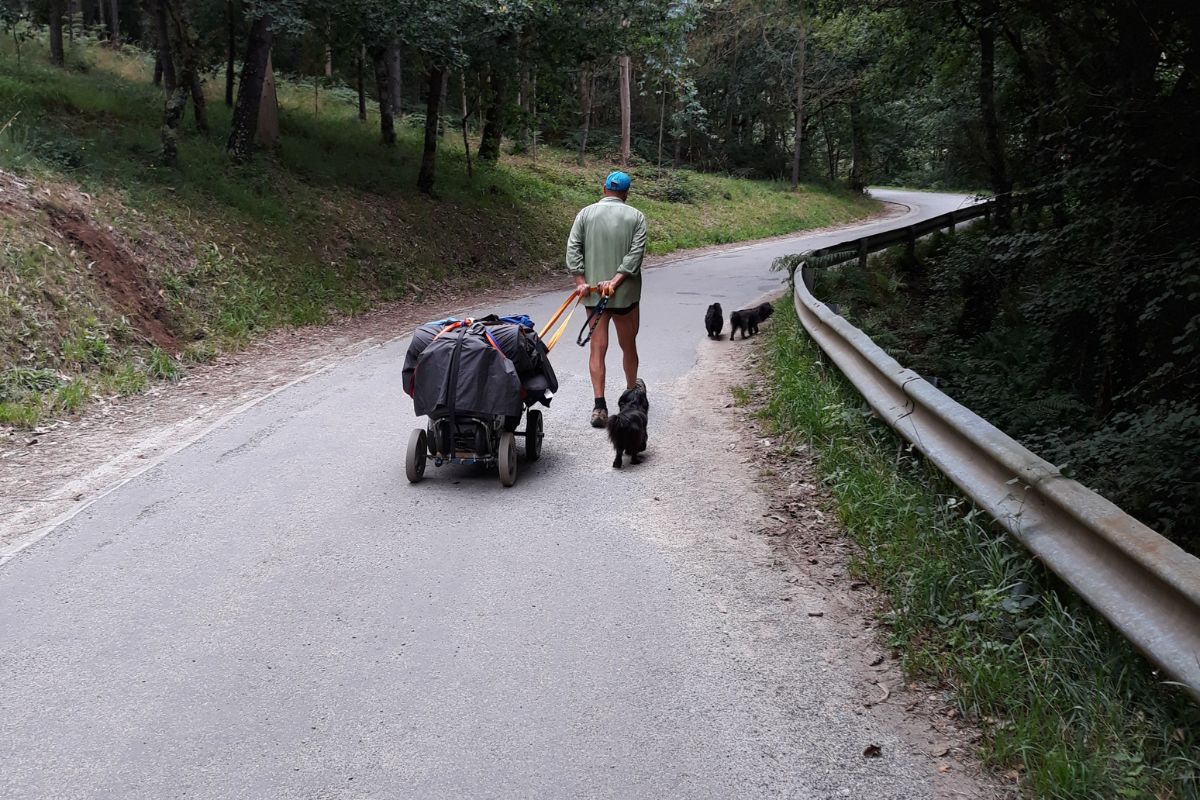
Pilgrim with their dogs climbing one of the toughest hills on the Camino to Finisterre.
Vao – As Travesas
We move to the English Way from Ferrol, which in the stage between Betanzos and Bruma offers a brief but steep climb between Vao and As Travesas. Approximately over 1.5 km, you climb about 125 m to reach the highest point of the last 100 km of this English route.
Oseira – Villarero
And lastly, on the Sanabrian Way, we can highlight the stage between Cea and A Laxe-Lalín, in the last 100 km from Ourense. This is a long variant of the 11th stage that offers an interesting climb starting from the monastery of Oseira, whose visit is worth the effort. After visiting the monastery, the pilgrim faces a climb of 180 m to be done over 2 km.
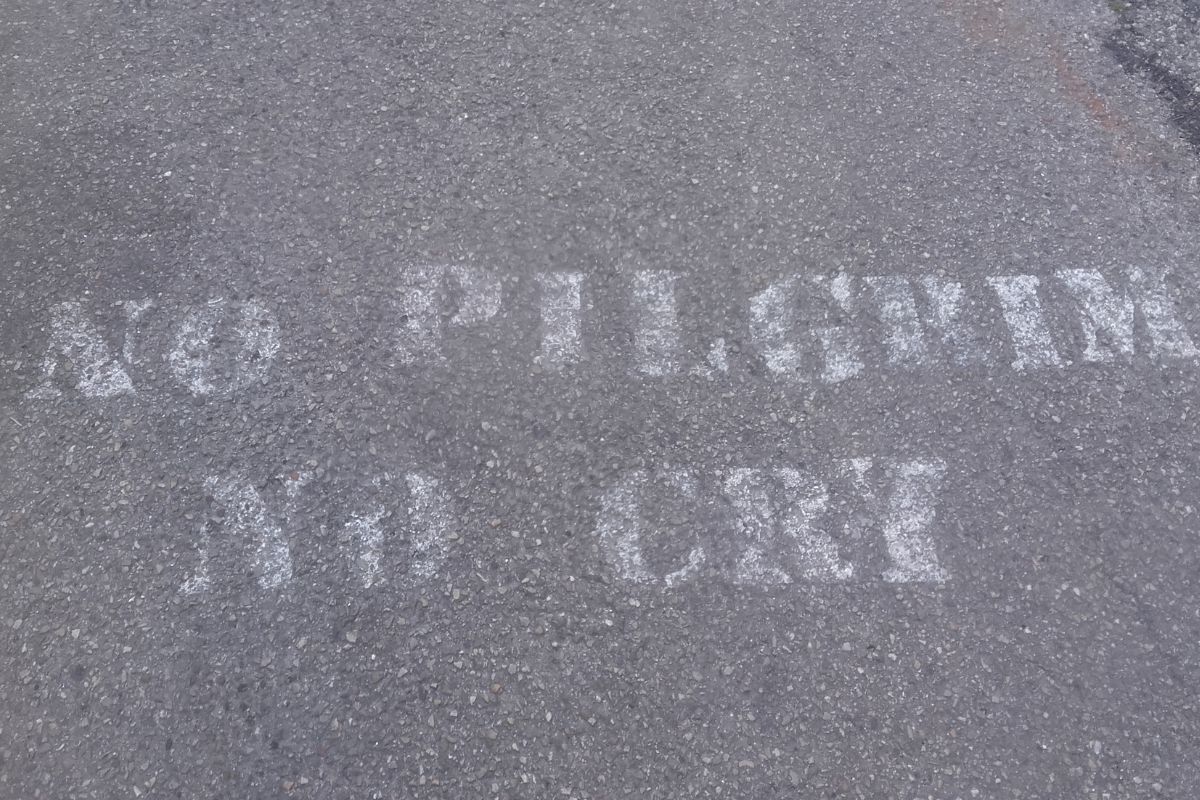
Message of encouragement from one pilgrim to another on the Camino.
“No pain, no glory”
So says the pilgrim’s proverb. No one said that doing the Way is easy, and sometimes you will find toughest hills on the Camino that will require physical efforts. However, the physical, mental, and psychological benefits that the Camino can bring you are well known. With good physical and mental preparation, you can overcome all these challenges, but if you want something lighter, contact us, and we will recommend accessible routes. Of course, the last climb we won’t forgive you: climbing the stairs to hug the Apostle in the Cathedral of Santiago.

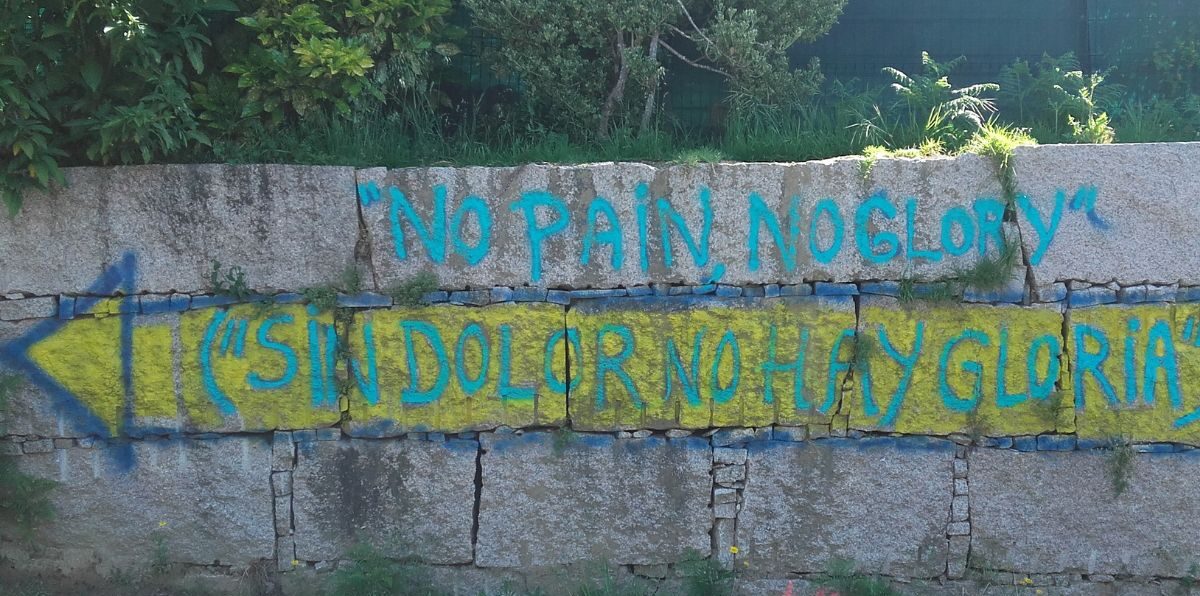


Leave A Comment